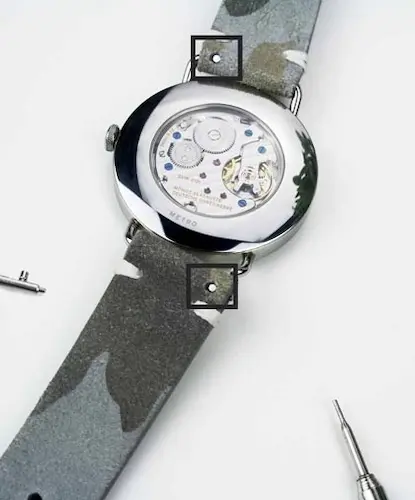A whole new style for your watch
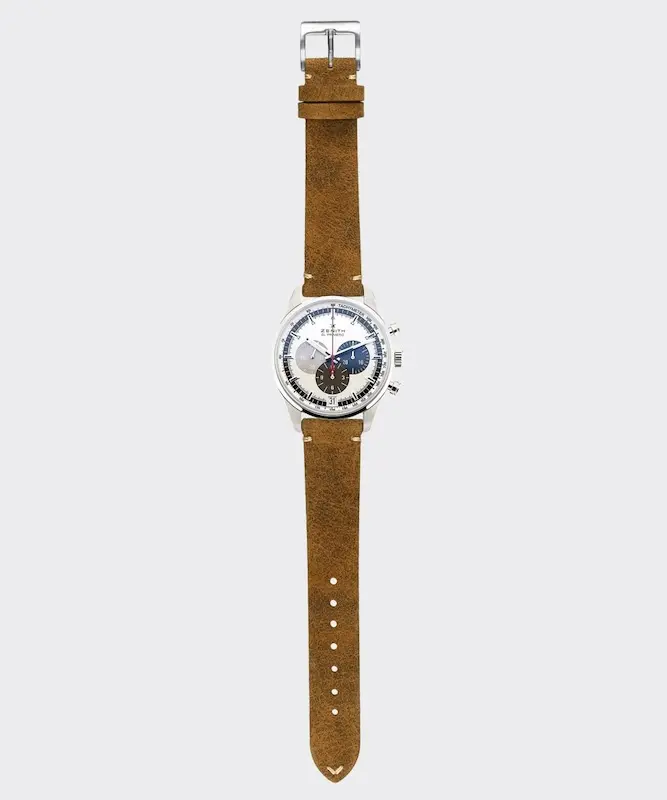
How to change your strap
First, we recommend checking how the current strap is attached to your watch. Most watches have a spring bar on each side, which is slid into the strap and clamped between the watch case's brackets. The term "spring bar" derives from its mechanism. In order to be clamped between the watch case's brackets and locked into place, it must be able to contract like a mechanical spring. Every spring bar possesses this basic mechanism.
There are now three different ways to remove a spring bar from a watch case – depending on the type of bar or the way it is attached to the case. Using the tool from our Watch strap shop You can easily change the strap using any of these three methods. Below, we'll explain how to change the watch strap depending on your specific case.
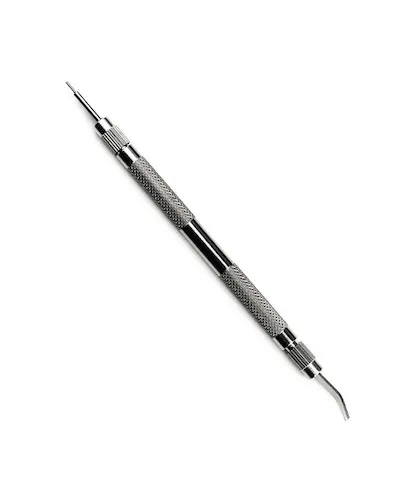
1. Most commonly used fastening
- The flat, fork-like side of the spring bar tool is placed between the case and the bracelet.
- The spring bar is then pushed (contracted) towards the side of the bracelet until it pops out of the hole.
- Now the watch strap is already loose, as shown in the picture.
- The spring bar should first be removed from the previously attached watch strap and inserted into the new strap. This ensures that the spring bar fits into the attachment of your watch.
- Next, you can insert the spring bar with strap into one of the two holes (see picture).
- At the other end of the spring bar, you now need to apply some pressure with the flat side of the tool so that you compress the spring bar enough to fit between the brackets of the watch case.
- Now you can carefully push the compressed spring bar with strap into the second hole with your tool.
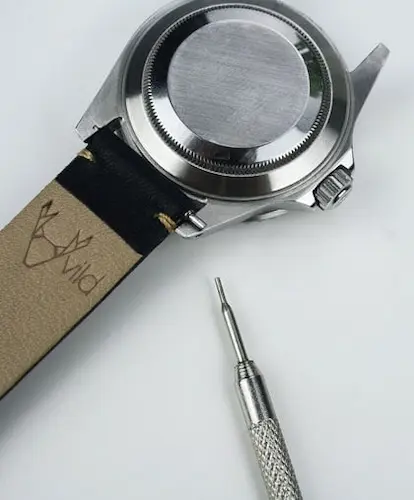
2. Fastening with holes on the outside of the watch case
On some watches, the holes for the spring bars extend through the case, making them visible from the outside. The biggest difference from variant 1 is the way the spring bar can be removed from the holder:
- To remove the watch strap from its holder, you'll need the pointed end of the spring bar tool. Use this end to press into one of the holes on the outside of your watch case (see image) until the spring bar pops out of its holder.
To insert the new strap, proceed as described in step 1. It's important that you use the existing spring bars for your new watch strap, as they usually differ slightly from conventional spring bars. They are slightly wider at the ends to fully fill the through holes in the watch case.
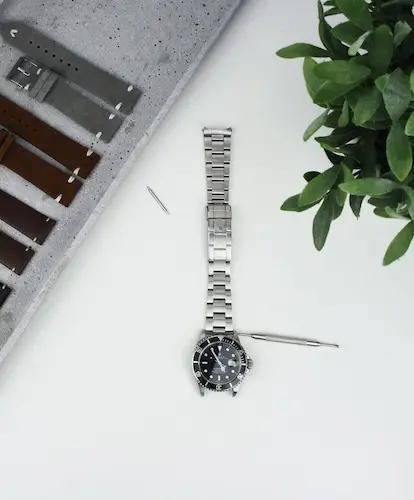
2. Fastening with holes on the outside of the watch case
On some watches, the holes for the spring bars extend through the case, making them visible from the outside. The biggest difference from variant 1 is the way the spring bar can be removed from the holder:
- To remove the watch strap from its holder, you'll need the pointed end of the spring bar tool. Use this end to press into one of the holes on the outside of your watch case (see image) until the spring bar pops out of its holder.
To insert the new strap, proceed as described in step 1. It's important that you use the existing spring bars for your new watch strap, as they usually differ slightly from conventional spring bars. They are slightly wider at the ends to fully fill the through holes in the watch case.

3. Fastening with quick-change spring bar
- To release the bracelet, simply slide the visible pin of the spring bar to the side.
- Now you can slide the spring bar out of the strap. Make sure the pin doesn't get stuck in the band's recess. It's best to use the spring bar tool for this.
- By placing the flat, fork-like side of the spring bar tool on the protruding pin of the spring bar, you can slide the bar into the new bracelet.
- Next, insert one side of the spring bar with strap into the hole in the watch case holder (see picture).
- The pin must now be pushed towards the inserted side to compress (contract) the spring bar.
- With the spring bar compressed, the watch strap can now be placed completely between the holders of the case until the spring bar clicks into place.
